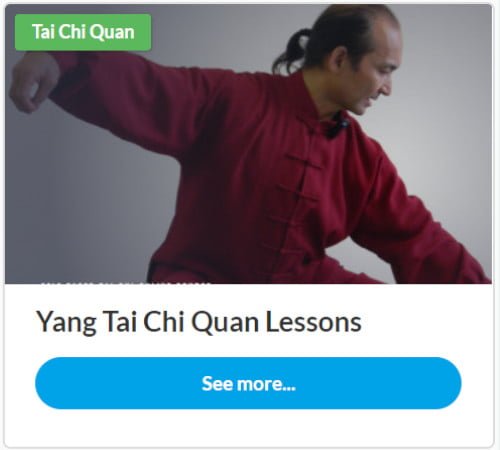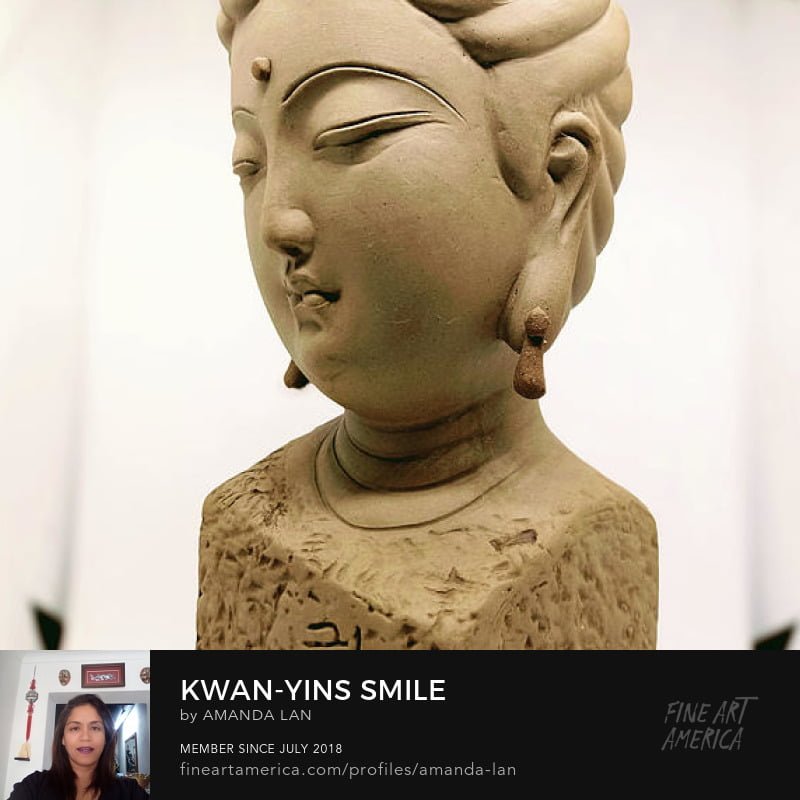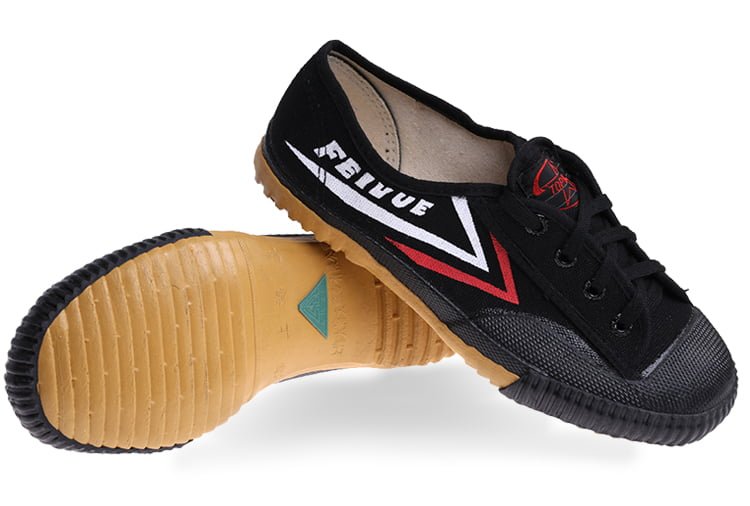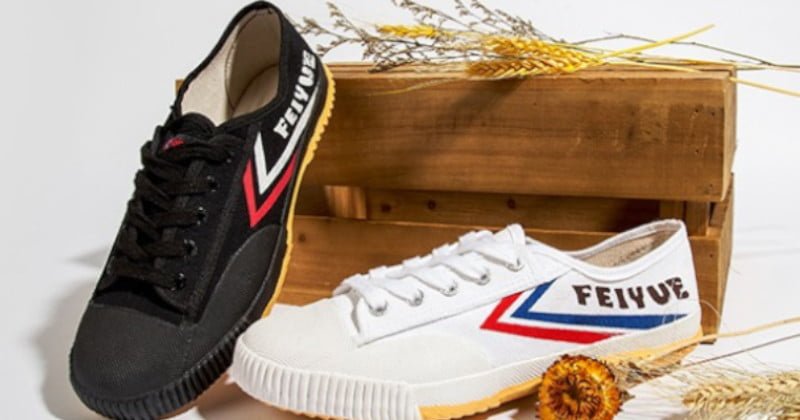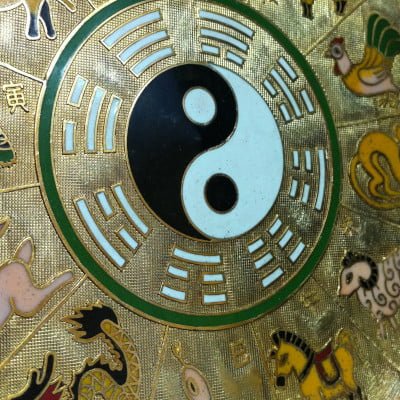
Chinese Horoscope
YOUR CHINESE ZODIAC ANIMAL
The date of Chinese New Year changes every year, but it always falls between January 21st and February 20th.
Every year I get the same complaint; why is it so early in the year? I often wonder if we have a goldfish memory. Lol
WHICH ZODIAC ANIMAL ARE YOU?
The Chinese zodiac, or Sheng Xiao (生肖), is a repeating 12-year cycle of animal signs and their ascribed attributes, based on the lunar calendar. In order, the zodiac animals are Rat, Ox, Tiger, Rabbit, Dragon, Snake, Horse, Goat, Monkey, Rooster, Dog, Pig.
Your birth year determines your Chinese zodiac sign, but it can get tricky, as the lunar calendar varies from the solar, or Gregorian, calendar.
Because the dates of Chinese New Year change every year, individuals born in January or February will need to pay special attention to their birth date in addition to their birth year.
In Chinese culture, the top 5 luckiest/most popular zodiac signs are Dragon, Snake, Pig, Rat, and Tiger conventionally.
Ben Ming Nian (Zodiac Birth Year)
Maybe you think your zodiac year (本命年 / ben ming nian) will be lucky. It’s your year after all. However, it’s the total opposite.
It’s seen as a hurdle you have to jump over. The way to protect yourself from evil spirits and bad fortune are to wear red underwear every day for the entire year. Even in modern times, it’s still treated as a real concern.
In some places, married men even have to be accompanied by their wives when they go out at night during their year!
The top 5 luckiest/most popular zodiac signs are?
________________________
Dragon, Snake, Pig, Rat, and Tiger conventionally.
TRAITS OF CHINESE ZODIAC ANIMALS Tiger: independent, successful, volatile Rat: witty, creative, charming Ox: diligent, perseverent, conservative Rabbit: gracious, considerate, sensitive Dragon: prosperous, brave, rash Snake: calm, thoughtful, stubborn Horse: faithful, energetic, carefree Sheep: easy-going, peacemaker, curious Monkey:family-orientated, clever, playful Rooster: honest, confident, pompous Dog: loyal, kind, perfectionist Boar: loving, tolerant, indulgent
________________________

Feng Shui doesn’t offer one-size-fits-all solutions, there are some general principles that are easy to follow. Chinese New Year amplifies the period to check and balance our Feng Shui within every aspect of our life. “Feng shui is a philosophy behind living spaces but may apply to our wellness too; as these spaces affect our overall wellness. ‘Wind’ (Feng) refers to the flow of Qi and Energy, whereas ‘Water’ (Shui) can be interpreted as the importance of maintaining fluidity in day-to-day life. In essence, Feng Shui is all about people: [inside a home] you have to consider every occupant’s personal space and respect shared spaces. Therefore we need to set aside time to re-focus. ” Reducing clutter plays a very important part in improving the Qi flow of your home, workspace, etc, especially for those with large families. Fend Shui of the Mind, Body, and Spirit is imperative to our 360 degrees of Wellness and Good Living Integrations. Everything from physical, mental, work, and living space needs to be treated as if it is a 1Mind Body Fitness and Wellness program. Practice Tai Chi Quan, Qigong, and Meditation to recalibrate and reset for optimal daily performance. View our clickable images with links to finding your 1Mind Body Fitness programs.
________________________
WHEN IS CHINESE NEW YEAR?
Chinese New Year, also known as Lunar New Year or Spring Festival, is just around the corner.
Chinese New Year 2022 will fall on Tuesday, February 1st, 2022, starting a year of the Tiger.
Celebrations of Chinese New Year traditionally last for 16 days, starting from Chinese New Year’s Eve to the Lantern Festival. In 2022, that is from January 31st to February 15th.
As a public holiday, Chinese people will get 7 days off from work from January 31st to February 6th in 2022.
The most notable dates of the Chinese Lunar New Year 2022 are these three days:
• New Year’s Eve on January 31st, 2022
• New Year’s Day on February 1st, 2022
• The Lantern Festival on February 15th, 2022
Traditionally Chinese Lunar New Year activities started as early as three weeks before Chinese New Year’s Eve. Old-fashioned (mostly rural) folk start cleaning their houses from the 23rd of the twelfth lunar month (January 25th, 2022).
HOW LONG IS IT?
China’s public holiday for Lunar New Year is 7 days, from Chinese New Year’s Eve to the sixth day of the lunar calendar new year.
Offices, banks, factories, shops, and most non-essential services will close doors for a week’s holiday. Hotels and large retail outlets stay open and may even be busier than usual!
School holidays are four weeks long and migrant workers abandon their factory and construction jobs for weeks to return home.
Holidays in Hong Kong, Macao, and other Asian countries such as Malaysia, Singapore, Vietnam, and Korea are 1 to 3 days.
People go back home to be together with families, eat, drink, cook, visit extended family and friends to exchange good wishes and red envelopes.

WHICH ZODIAC ELEMENT ARE YOU?
The Chinese zodiac, is divided into 12 parts, and five elements. The five elements are metal, water, wood, fire, and earth. Each year of the Chinese Zodiac is represented by a different animal: the rat, ox, tiger, rabbit, dragon, snake, horse, sheep, monkey, rooster, dog, and pig
If you already know your zodiac animal in Chinese astrology, you might think your personality is similar to those born 12 years earlier or 12 years later in a year with the same zodiac animal as yours.
However, there is another factor to consider. In addition to the cycle of 12 zodiac animals, each year is also assigned one of five elements—Wood, Fire, Earth, Metal, or Water. Each element is associated with certain traits and behavioral patterns, adding a dimension of richness to the matrix of personality in Chinese astrology.
The idea of these elements originated in the Five Elements Theory or Wu Xing in Chinese. This complex philosophical system divides everything in the world into five categories, each possessing different characteristics. It was first formalized in the Spring and Autumn period in Chinese history—a period that gave rise to iconic philosophers like Confucius and Laozi—and would go on to become the foundation of many disciplines including Daoism, Chinese philosophy, astrology, Feng Shui, and more.
According to Chinese astrology, the year of your birth sign is believed to be one of the most unlucky years of your life. It is thought that people in their zodiac year offend Tai Sui, the God of Age, and incur his curse. In Chinese culture, the top five luckiest or most popular zodiac signs are Dragon, Snake, Pig, Rat, and Tiger. In China, each one has an animal sign that is determined by the lunar birth date. In all, there are twelve animal signs each undergoes a 12-year cycle. So, every twelve years, one will meet the year of his birth sign. People born in the Year of the Tiger will be facing their “Ben Ming Nian” — their own zodiac year — in 2022. Followers believe this means there will be more disruptions and instabilities in the year to come. “Your financial luck isn’t too bad this year but you may be overshadowed by negative emotions. According to Chinese astrology, the zodiac year is a year of bad luck. Most Chinese people are afraid to spend their birth sign year. Why is it unlucky? It’s said that the people during the Ben Ming Nian are easy to encounter Tai Sui who is the legendary God in charge of people’s fortune. Their fortune usually fluctuates during the year. Many bad things such as illness, financial loss, extramarital affairs,s, etc. may happen to them. Some people think it’s superstitious to believe this. In fact, it’s not completely bad for people in the zodiac year. It varies greatly from individual to individual. Some people may have good fortune instead of bad luck. But in general, marriage, moving house, travel, starting business…are thought to be worthy of great attention during the year.
The Science of the Chinese Zodiac
How do Chinese astrologers know each zodiac’s personality, fortune and compatibility with others? Below is some technical information you might be interested in. Dì Zhī (地支), or Earthly Branches, were the original terms used for the years. These branches are also assigned to the hours of the day, based on solar time.
The animals were later added as mnemonics and categorized as either yīn (阴) or yáng (阳).
Ten Celestial Stems (天干 / tiān gān) pair with the Earthly Branches for a 60-year calendrical cycle. Then add in an element. These cycle through, but each zodiac also has a fixed element. This fixed element is what determines which sign you’re compatible with.
Twelve Earthly Branches: zi (子), chǒu (丑), yín (寅), mǎo (卯), chén (辰), sì (巳), wǔ (午), wèi (未), shēn (申), yǒu (酉), xū (戌), hài (亥).
Ten Celestial Stems: jiǎ (甲), yǐ (乙), bǐng (丙), ding (丁), wù (戊), jǐ (己), gēng (庚), xīn (辛), rén (壬), guǐ (癸).
Five elements: water (水 / shuǐ), wood (木 / mù), fire (火 / huǒ), earth (土 / tǔ), metal (金 / jīn).
Compatibility There are six groups (六合 / liù hé) of most compatible pairs. They fit into each other like jigsaw pieces. These are the ones who support you in the background. Four groups of trios (三合 / sān hé) are the next most compatible signs. Working in a team complements your skills.
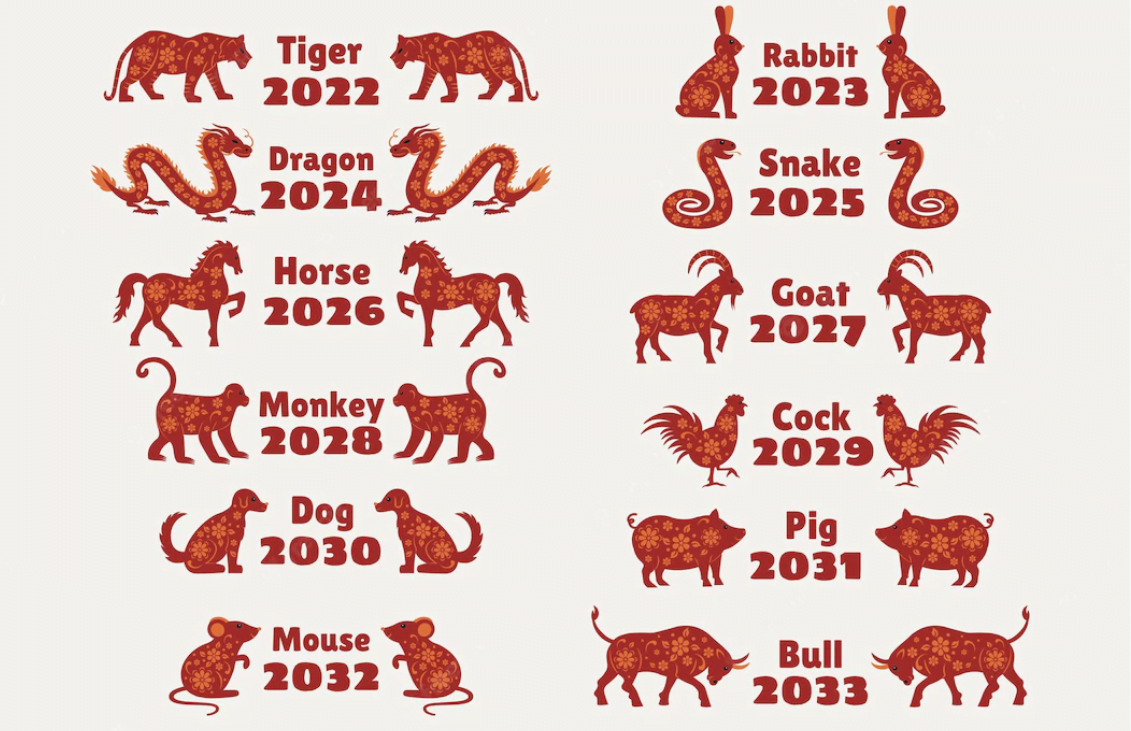
The 12 Animal Zodiac
Rat (鼠 / Shǔ) Birth Years: 2020, 2008, 1996, 1984, 1972
People born in the year of the Rat like saving and collecting. They never have hard times financially and live organized lives. If you receive a valuable gift from a Rat, know that he thinks highly of you, because he doesn’t usually like opening his wallet for others. Rats don’t look for praise and recognition. They are very sensitive and know when there is trouble. When they do take risks, they’re usually successful.
Science
Rat is Yang, and its earthly branch is Zi.
Hours
23:00–01:00. Rats are at the height of their activity at this time and people began to associate rats with the Zi hour.
Folklore
Rats steal food, which can be interpreted as the household being wealthy and having surpluses. Because of their fast reproduction rate, some also pray to rats for children.
Compatibility
Best match: Ox
Best group: Monkey, Dragon
Incompatible: Horse
Ox (牛 / Niu) Birth Years: 2021, 2009, 1997, 1985, 1973, 1961, 1949, 1937
People born in the year of the Ox are hard workers and have a strong sense of responsibility. Even if they run into difficulty during work, they’ll persevere through. They aren’t very romantic, but are patient and would never force themselves onto someone who doesn’t like them. They are usually quiet and keep their emotions bottled up inside. It’s hard for others to understand them. When they do lose their temper, it’s like an explosion and can drive others away.
Science
Ox is Yin, and its earthly branch is Chǒu.
Hours
01:00–03:00. This is when farmers would wake up to feed their oxen.
Folklore
Whipping spring cattle (打春—dǎ chūn) was a ritual performed to begin a new year of hard work and good harvests. The ox’s stomach would be filled with five types of grains and scattered after the whipping to represent the sowing and harvest.
Compatibility
Best match: Rat
Best group: Snake, Rooster
Incompatible: Goat
Tiger (虎 / Hǔ) Birth Years: 2022, 2010, 1998, 1986, 1974, 1962
People born in the year of the Tiger are independent and have high self-esteem. They enjoy being the leader and protector of average people. They love justice and never back down in an argument. Recklessness is their biggest weakness, causing them to fail. However, they never truly fail. Tigers will always find a way to stand back up and succeed in the end.
Science
Tiger is Yang, and its earthly branch is Yín.
Hours
03:00–05:00. Tigers are the most dangerous at night. Farmers would always be able to hear their frightening roars during this hour.
Folklore
Tigers are the kings of all beasts. People believe that they are the guardians of children. In the past, infants were washed with water boiled with tiger bones to prevent diseases. Children also wear hats and shoes with tiger designs.
Compatibility
Best match: Pig
Best group: Horse, Dog
Incompatible: Monkey
Rabbit (兔 / Tù) Birth Years: 2011, 1999, 1987, 1975, 1963
People born in the year of the Rabbit are gentle, quiet and polite. They are patient, intelligent and chic. Their sense of responsibility and attention to detail lead to great career success. They take love seriously as well, and would never fall for someone easily. If they find the right person, they’ll love them to the end of the world and back.
Science
Rabbit is Yin, and its earthly branch is Mǎo.
Hours
05:00–07:00. At daybreak, rabbits would come out of their homes to feed on the dew.
Folklore
The rabbit represents the moon. Rather than the man in the moon, the ancient Chinese believed that there was a rabbit in the moon.
Compatibility
Best match: Dog
Best group: Pig, Goat
Incompatible: Rooster
Dragon (龙 / Lóng) Birth Years: 2012, 2000, 1988, 1976, 1964
People born in the year of the Dragon have hearts full of adventure and romance. It’s hard for people to understand a Dragon’s mysterious personality. At the same time, they are indifferent to things the average person worries about. They may seem lazy, but once they decide to do something, they’ll be more ambitious and vigorous than anyone else. Science Dragon is Yang, and its earthly branch is Chén. Hours 07:00–09:00. This is the most common time for fog to appear. According to folklore, dragons ride the fog to come down to Earth. Folklore Dragons are the most revered creature in Chinese culture and are used to represent royalty. Emperors were often seen as a dragon’s reincarnation. Paired with the phoenix, they also symbolize a happy marriage and harmony between yin and yang. Compatibility Best match: Rooster Best group: Monkey, Rat Incompatible: Dog
Snake (蛇 / Shé) Birth Years: 2013, 2001, 1989, 1977, 1965
People born in the year of the Snake are idealists. On the outside, they may seem cold but, deep inside, they are warm and enthusiastic. Their desire of exclusive ownership is very fierce. It irks them if they can’t fully understand someone. Snakes are devoted and determined, but their worst enemy is laziness. Science Snake is Yin, and its earthly branch is Sì. Hours 09:00–11:00. After the fog has dissipated, snakes would come out to bask in the sun. When creating the character for sì (巳), it was written to look like a snake. Folklore Snakes usually have a negative diction and are symbols of witchcraft. However, Nǚ Wā (女娲), the creator of the world in Chinese mythology, had a human’s head and a snake’s body. Compatibility Best match: Monkey Best group: Rooster, Ox Incompatible: Pig
Horse (马 / Mǎ) Birth Years: 2014, 2002, 1990, 1978, 1966
People born in the year of the Horse are never one to surrender. They are always positive and energetic, pushing themselves forward. Their biggest desire is to have the freedom to do what they like and be able to express themselves. However, they also have various negative traits. Horses are bad at keeping secrets and lose interest quickly. Science Horse is Yang, and its earthly branch is Wǔ. Hours 11:00–13:00. When the sun is at its brightest moment, the horses would gallop and prance joyfully in the fields. Folklore As the head of the six domestic animals, horses are crucial in transportation and war. They represent speed and freedom. Many Northern ethnicities, such as the Mongolians and Manchurians, revere and worship the horse. Compatibility Best match: Goat Best group: Tiger, Dog Incompatible: Rat
Goat (羊 / Yang) Birth Years: 2015, 2003, 1991, 1979, 1967
People born in the year of the Goat have a pure and kind heart. They’d rather suffer silently than argue and ruin someone else’s mood. However, even in silence, they still hold onto their own opinion. In regards to their passions, they will do anything possible to fulfill their wishes. Though kind, Goats have tricks up their sleeves as well. They are skilled at using soft power, able to patiently and politely persuade others into their favor. Science Goat is Yin, and its earthly branch is Wèi. Hours 13:00–15:00. At this time, the dew on the grass would be dried by the sun. This is the best hour to let the goats and sheep out. Folklore Xiè Zhì (獬豸) is a mythological one-horned goat. It was the assistant of Gāo Yáo (皋陶), god of Justice. The Goat is also the symbol of filial piety. Compatibility Best match: Horse Best group: Pig, Rabbit Incompatible: Ox
Monkey (猴 / Hóu) Birth Years: 2016, 2004, 1992, 1980, 1968
People born in the year of the Monkey do things based on interest. If it’s something they don’t quite care for, they’ll do the work sloppily. If it something they’re interested in, they’ll put their entire heart into it and work until they succeed. They live a long life full of energy and curiosity for the world. Monkeys also value relationships. However, spoiling children may be their weakness. Science Monkey is Yang, and its earthly branch is Shēn. Hours 15:00–17:00. The weather is much cooler with the sun setting and the monkeys would play around in the forest. Folklore There are multiple legends about the Monkey as humans’ ancestor. Monkeys also like eating peaches. Peaches are symbols of longevity and, with time, monkeys also became associated with long life. Compatibility Best match: Snake Best group: Rat, Dragon Incompatible: Tiger
Rooster (鸡 / Jī) The Birth Years: 2017, 2005, 1993, 1981, 1969
People born in the year of the Rooster are able to sense what the other person is thinking or feeling. They have quick reactions and high EQ. They make great friends, although some are cunning. Roosters are creative and talented in the arts, although few find a career in that field. They have foresight and plan everything carefully. Science Rooster is Yin, and its earthly branch is Yǒu. Hours 17:00–19:00. The character for yǒu (酉) looks similar to wine (酒—jiǔ), and evening is the time for dinner and wine. It is also time to collect the roosters and hens and put them back in their nests, else it’ll be too dark to find them. Folklore According to legends, roosters are able to protect against evil spirits. In ancient times, sworn brothers must swear to the heavens, then drip rooster blood into wine and drink it all. Compatibility Best match: Dragon Best group: Snake, Ox Incompatible: Rabbit
Dog (狗 / Gǒu) Birth Years: 2018, 2006, 1994, 1982, 1970, 1958
People born in the year of the Dog are conservative and full of justice. Because of their loyalty, Dogs are valued in the workplace. They rarely break rules, except for people important to them. In life, they only wish to live quietly with their family. Science Dog is Yang, and its earthly branch is Xū. Hours 19:00–21:00. Before sleeping, the people must patrol around for a check. Trailing behind them is the dog, humanity’s little helper. Folklore In the Qin and Han dynasty, the Stone Dog was worshipped by the people. In the Guangdong province, it is still popular to name dogs Wàng Cái (旺财). It means “prosperous wealth” and comes from dogs’ barking sounds (旺旺—wàng wàng). Compatibility Best match: Rabbit Best group: Tiger, Horse Incompatible: Dragon
Pig (猪 / Zhū) Birth Years: 2019, 2007, 1995, 1983, 1971
People born in the year of the Pig think logically and are able to fix whatever problem they’re in. They aren’t good communicators, but they’re kind and able to provide for the family. Most of them are wealthy. Their only obvious fault is that they lose their temper easily. Science Pig is Yin, and its earthly branch is Hài. Hours 21:00–23:00. At night, the pig can be heard rustling around. In order to fatten it up, the farmer must feed before calling it a day. Folklore Pigs are the symbol of wealth. Their chubby faces and big ears are signs of fortune as well. Compatibility Best match: Tiger Best group: Rabbit, Goat Incompatible: Snake

